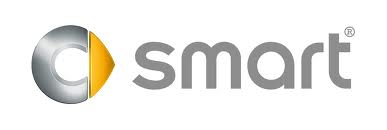ForTwo L3-1.0L (2009)

1.2.2
Fresh-water quality for coolant composition as under item 1.1.1 (passenger-cars and commercial-vehicle engines)
Sum total of alkalis (water hardness): 0 to 3.6 mmol/l (0 up to 20°d)*
pH value at 20°C:
6.5 to 8.5
Chlorine ion content:
max. 100 mg/l
Total chlorides and sulfates:
max. 200 mg/l
1.2.3
Fresh-water quality for coolant composition as under item 1.1.2/1.1.3 (commercial-vehicle engines)
Sum total of alkalis (water hardness): 0 to 2.7 mmol/l (0 up to 15°d)*
pH value at 20°C:
6.5 to 8.0
Chlorine ion content:
max. 80 mg/l
Total chlorides and sulfates:
max. 160 mg/l
If in doubt, contact Daimler AG, operating fluid specialist department, C401, D-70546 Stuttgart, Germany.
* Customary designations for water hardness in various countries:
1 mmol/l=5.6° d=10° f=7.02° e=100 mg/kg Ca CO3.
1° d (German degree =1° dGH)=1.78° (French degree)
=1.25° e (English degree)=17.9 mg/kg Ca CO3 (USA hardness).
1.3 Premixed coolant
Several providers have water with premixed coolant in their product range. Provided they are approved (see below), they can also be used;
the regulations relating to application, composition, change intervals, etc. of these coolant specifications also apply. It is imperative that the
correct concentration (50/50) is used in their application and, of course, further dilution is not permitted.
Coolant approval status:
For all vehicles and engines
(Basis 325.0) Sheet 326.0
For commercial vehicle and industrial engines (Basis 325.2) Sheet 326.2
For commercial vehicle and industrial engines (Basis 325.3) Sheet 326.3
The regulations for each respective Sheet 325.x are to be transferred correspondingly to Sheet 326.x.
At the time of compiling these regulations it is possible that not all the Sheets 326.x are represented with approved products.
2
Coolant additives (General information)
Normally, coolant consists of water and anticorrosion/antifreeze agents. The anticorrosion/antifreeze agents (ethylene glycol with corrosions
inhibitors) in the cooling system have to fulfill, among other things, the following functions:
-
to provide sufficient corrosion and cavitation protection for all cooling system components
-
freezing point depression (antifreeze)
-
increasing boiling point
For corrosion protection purposes the coolant approx. 50 vol.-% Anticorrosion/antifreeze agents are added if the expected ambient temperatures
do not require an even higher concentration. This concentration (50 vol %) offers frost protection up to approx. -37°C. A higher concentration is
only necessary if the ambient temperatures are even lower.
Even with extremely low ambient temperatures, not more than 55 vol.-% anticorrosion/antifreeze agent should be used, because at this level the
maximum antifreeze protection is reached and a greater concentration reduces the antifreeze protection again and decreases the heat dissipation
(55 vol.-% corresponds to antifreeze protection down to approx. -45°C).
Should these coolant regulations fail to be observed then corrosion and damage to the cooling system are inevitable.
The admixture of anticorrosion/antifreeze agent serves to increase the boiling point. By raising the pressure the boiling temperature can be
increased yet further. Both physical relationships are put to use in modern cooling systems - the maximum coolant temperature is raised, without
increasing the danger of boiling. In keeping with the higher temperature level the cooling performance is also greater. Only approved products
(Sheet325.0 or 326.0 or 325.2 or 326.2 or 325.3 or 326.3 as well as 312.0 or 311.0) provide reliable cooling system protection. In special cases
(commercial-vehicle engines, no antifreeze specification) coolant additives can be used that are primarily corrosion protection additives. In this
case item 2.3 is valid.
As an exception, if neither anticorrosion/antifreeze agent conforming to Sheet 325.0 nor coolant additives without addition of antifreeze
conforming to Sheet 312.0 are available, proceed according to point 2.4 (exception: OM 500 and OM 900). The systems described under items
2.2/2.3/2.4 are not compatible with each other. It is recommended to mix the entire coolant quantity outside the engine.
2.1 Corrosion/antifreeze for passenger car engines and engine OM 470 to 473
Alongside the correct constitution of the cooling water (point 1.2.2), care must be taken to ensure that only anticorrosion/ antifreeze agents as
approved for all engines in accordance with Sheet 325.0 are used. These products serve to guarantee that, in particular, an effective protection
